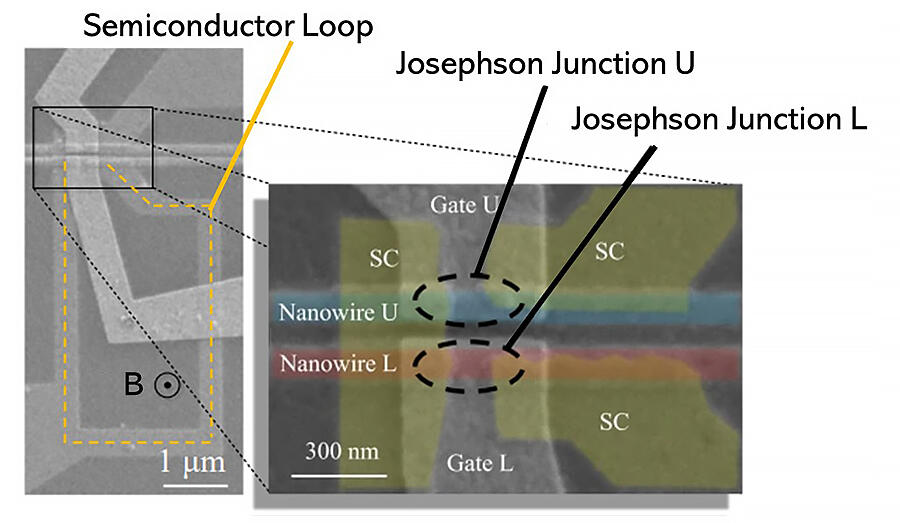An international research group led by special postdoctoral researcher Dr. Sadashige Matsuo and group director Dr. Seigo Tarucha of the Quantum Functional System Research Group, RIKEN Center for Emergent Matter Science, have formed two Josephson junctions on two semiconductor nanowires arranged in parallel and successfully observed for the first time the "nonlocal Josephson effect," which indicates the existence of coherent coupling between the Josephson junctions.
A Josephson junction is a phenomenon in which two superconductors are weakly connected through an insulator or regular conductor. This device is expected to play a major role in the development of superconducting quantum computers, which have seen remarkable progress in recent years. As a new control method for Josephson junctions, the use of coherent coupling between two Josephson junctions placed in close proximity has been proposed, but was yet to be demonstrated.
The research group fabricated two Josephson junction (U and L junctions) devices sharing a superconducting electrode (aluminum, Al) on one side on semiconductor nanowires (indium arsenide, InAs) fabricated by Professor Christopher Palmstrøm's group at the University of California.

Provided by RIKEN
They also attached gate electrodes to electrically control each Josephson junction. They embedded the L junction in a superconducting loop structure and applied a magnetic field perpendicular to the plane (perpendicular to the surface), allowing the phase difference of the L junction to be controlled. The group cooled the device to a cryogenic temperature of 10 mK and measured the electron transport properties of the U junction.
The measurements showed that the current value at which the resistance becomes non-zero (the switching current) oscillates distinctly with respect to the magnetic field when the current is increased from zero at the U junction. The period of the observed oscillation of the switching current was found to coincide with the period of the change in the phase difference of the L junction calculated from the enclosed area of the superconducting loop and the magnitude of the magnetic field. The observed oscillation phenomenon of the switching current of the U junction with respect to the magnetic field indicates that the superconducting current flowing through the U junction has a dependence on the phase difference of the L junction.
The oscillation phenomenon in this study indicates that the U and L junction form a coherent coupling and means that the nonlocal Josephson effect produced as a result was successfully observed.
"This result is a phenomenon that appears universally in Josephson junctions and will have a ripple effect on device physics using superconductivity in general," explains Matsuo. "In particular, I anticipate applications in magnetic sensors and quantum information processing devices. We would like to build on the results of this research moving forward to develop superconducting devices with new functions, to understand the microscopic mechanism of the nonlocal Josephson effect and to demonstrate the Majorana particle, which we expect to be applied to topological quantum computation in accordance with noncommutative statistics."
This article has been translated by JST with permission from The Science News Ltd.(https://sci-news.co.jp/). Unauthorized reproduction of the article and photographs is prohibited.




